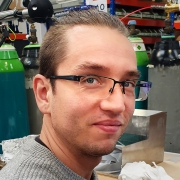Why you shouldn’t overlook C60 beams just yet
C60 cluster ion beams are a fantastic tool for analyzing both hard and soft materials. Composed of sixty carbon atoms arranged into a football shape, C60 ions combine several different features making it a great all-rounder ion beam. This is why we always recommend customers to consider including a C60 beam when specifying their J105.
As the C60 molecule is larger (approx. 7 Å) than the lattice constant for most materials, it does not experience channeling the way smaller ions such as bismuth do. As such C60 beams exhibit incredibly uniform sputter rates across a wide range of materials, and even on challenging poly-crystalline materials where there is a range of crystal orientations.
As a cluster ion, C60 also produces very shallow craters with very little, if any, subsurface damage, so etch cycles are not needed to remove damaged layers when performing depth profiles or 3D imaging. As the J105 samples 100% of the analysis volume, high sensitivity is guaranteed, and combined with spot sizes as low as 300 nm, C60 is a powerful beam for delivering maximum resolution in 2D and 3D.

The figure below shows a 3D image of a semiconductor stack alongside a depth profile through the same, performed with a 40kV C60 beam in positive ion mode. The sample consists of layers of InSb, Al, and GaAs respectively, covered in a protective photoresist layer.
The resulting 3D SIMS image shows the layers in amazing clarity, with very sharp interfaces. As the J105 always samples 100% of the analysis volume, high sensitivity is guaranteed. The detailed depth profile through the sample also shows the presence of dissolved Al within the InSb layer, as well as the presence of Sb in the pure Al layer.
The 40kV C60 beam is ideal for this type of sample or application due to the combination of soft organic, inorganic, and hard metallic layers within the same sample. Combined with spot sizes as low as 300 nm, C60 is a powerful beam for delivering maximum resolution in 2D and 3D, no matter what type of sample you have.
 Ionoptika 2020
Ionoptika 2020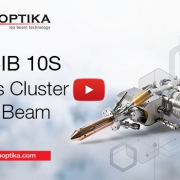 Ionoptika 2020
Ionoptika 2020